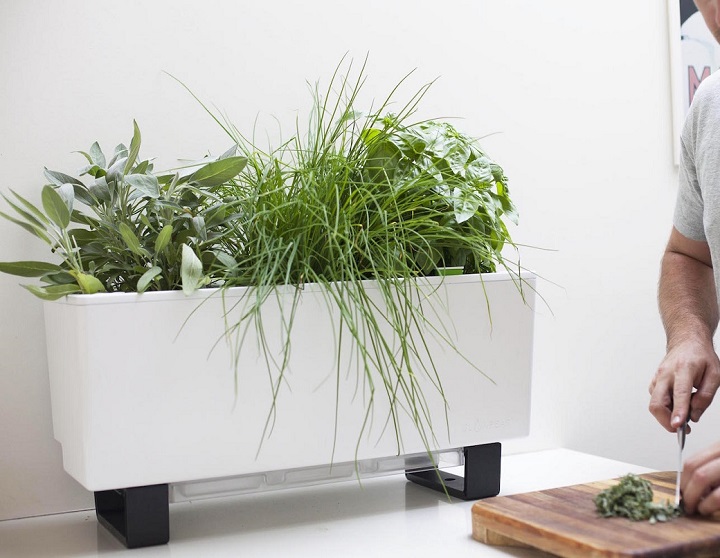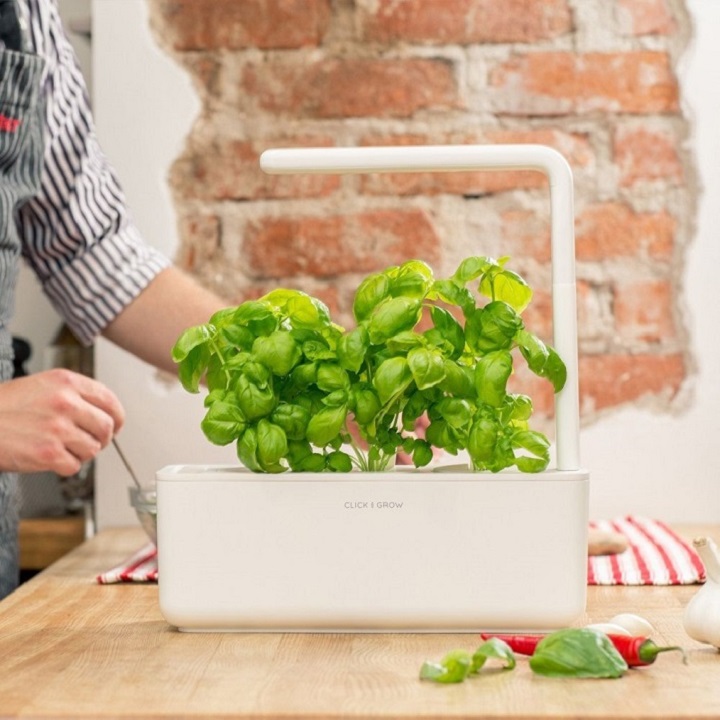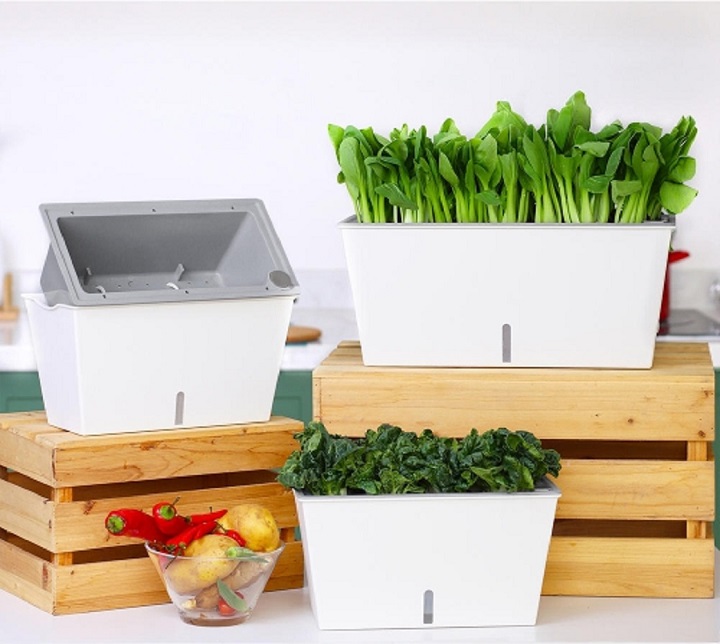The greatest problem with houseplants is that they rely on human caregivers for water, light, nutrients, and pest control – in short, everything they require to live. And as far as we know, humans can be inconsistent, especially when determining how much water to give their plants. Overwatering is, in fact, the leading cause of houseplant death.
What Are Self-Watering Planters?
Self-watering pots take the guesswork out of watering by allowing plants to water themselves. They ensure consistent moisture and less frequent watering, promote efficient water use, and prevent plant diseases by delivering water to a plant from a reservoir. For most plants, water delivered through the roots is ideal. If the leaves get wet during the watering process, some species, such as phlox and tomatoes, can develop fungal diseases. Water may fall on the floor or the leaves of a plant when sprayed or watered with a watering can, where it evaporates and does no good.
When it comes to aesthetics, self-watering planters are available in various sizes and shapes to accommodate the plant you’re rehoming. Moreover, they come in different colours to match your home décor. For instance, high-quality white planter pots are the real deal for your home oasis because of their clean and contemporary design, UV protection, and hard-wearing construction. What’s more, modern white planter pots can be free-standing and wall-mounted to make the most out of your space.
Why Use a Self-Watering Planter?

Solves the Problem with Human Inconsistency
Consistently caring for plants is arduous work. If you’re not using a grow light exclusively, you won’t be able to control how much light they get, so their water requirements will fluctuate. Two cups of water one week may be excessive or insufficient the next. And this is the crux of the issue with houseplants. They yearn for one thing that most of their caregivers can’t give them: consistency.
It’s normal for people to get busy and forget to water for a week, then compensate by giving the plant an “extra drink” the following week. The soil is still very wet a week later, and you have overwatered, so you withhold water for another week, and a bad cycle begins. By allowing the plant to drink from a reservoir as needed, self-watering planters eliminate inconsistency in watering. They also keep the soil moist for a longer period within the pot. As a caregiver, knowing when to water is made easier because all you have to do is refill the reservoir when it runs dry.
Use the Sub-Irrigation Method
Sub-irrigation is a technique used for watering plants from below rather than above. Self watering pots use this technique with its patented sub-irrigation insert that allows the soil to maintain a consistent moisture level at the base of the pot while allowing thirsty plants, like the Ficus family, to grow through the insert and directly into the reservoir for continuous access to water and nutrients.
Looking to nature can help you understand the entire process. When it rains, the soil absorbs the moisture, and gravity draws it to the lower levels of the soil, where it is absorbed by clay and stone subsoil horizons. When the top layers of soil dry out, the plant’s deep root systems can still draw water from the subsoil’s water reserves when needed. Plants can survive droughts thanks to the water retained in the subsoil, as the roots still have access to water. Typical indoor planters do not take advantage of this natural system, forcing the plant to rely on top watering when its caregiver perceives the plant to be thirsty.
Perfect for Tropical Plants

Tropical plants prefer wet feet but dry ankles. This means that they need water at the root level but don’t want the entire soil in the pot to be saturated. The top few inches of soil on the dry side are preferred by most plants, who only want moisture at the root level. Overwatering is the most common cause of plant death, resulting in wet ankles and a lack of oxygen at the roots. A well-designed self watering pot is ideal for tropical plants because the water reservoir and the growing medium are separated.
Easy to Use
As far as convenience is concerned, the filling mechanism of the self-watering planter is easily accessible and has a water level indicator or a dry indicator that shows how much water the plant has left.
While you can pick up small pots and judge the remaining water by eyeballing it or the weight of the pot, tall, heavy plants make this impractical.
How to Choose the Ideal Self-Watering Planters’ Size

Not all self-watering planters hold and necessitate the same amount of water. Some plants, such as succulents, cacti, orchids, and others, may require less frequent watering and thrive when the soil dries out between watering; too much water can cause root rot in succulents, cacti, orchids, and other plants.
Make sure you understand the moisture requirements of the plants that will live in the container before choosing the best planter. If you have plants that would benefit from an automated watering system, choose containers that can hold water for at least 7-10 days.
Are Self-Watering Planters Ideal for Every Plant?
To control the transpiration rate, the vast majority of tropical plant species prefer consistent levels of moisture in the soil and access to a water reservoir. Even plants with shallow root systems, such as cacti and succulents, can thrive in a self-watering planter if they are given enough light. Moreover, in desert landscapes, self-watering planters’ patented insert in combination with aeration stones provides excellent root aeration while also drawing water up into the lower soil layer, simulating natural environmental conditions.